A cell of emf E and internal resistance r is connected in series with an external resistance nr. Than what will be the ratio of the terminal potential difference to emf, if n=9.
The correct Answer is:0.9
To solve the problem, we need to find the ratio of the terminal potential difference (V) to the electromotive force (E) of a cell with internal resistance (r) connected in series with an external resistance (nr), where n = 9.
1. Identify the Components:
- The cell has an electromotive force (emf) of E and an internal resistance of r.
- The external resistance is given as nr, where n = 9.
2. Total Resistance in the Circuit:
- The total resistance (R_total) in the circuit is the sum of the internal resistance and the external resistance:
Rtotal=r+nr=r+9r=10r
3. Current in the Circuit:
- According to Ohm's Law, the current (I) flowing through the circuit can be calculated using the formula:
I=ERtotal=E10r
4. Terminal Potential Difference (V):
- The terminal potential difference (V) can be calculated using the formula:
V=I⋅(nr)=I⋅(9r)
- Substituting the expression for I:
V=(E10r)⋅(9r)=9E10
5. Ratio of Terminal Potential Difference to EMF:
- Now, we need to find the ratio VE:
VE=9E10E=910
6. Final Result:
- Therefore, the ratio of the terminal potential difference to the emf is:
VE=910
- The cell has an electromotive force (emf) of E and an internal resistance of r.
- The external resistance is given as nr, where n = 9.
- The total resistance (R_total) in the circuit is the sum of the internal resistance and the external resistance:
Rtotal=r+nr=r+9r=10r
- According to Ohm's Law, the current (I) flowing through the circuit can be calculated using the formula:
I=ERtotal=E10r
- The terminal potential difference (V) can be calculated using the formula:
V=I⋅(nr)=I⋅(9r)
- Substituting the expression for I:
V=(E10r)⋅(9r)=9E10
- Now, we need to find the ratio VE:
VE=9E10E=910
- Therefore, the ratio of the terminal potential difference to the emf is:
VE=910
Similar Questions
Knowledge Check
If n cells each of emf E and internal resistance rare connected in parallel, then the total emf and internal resistances will be
Aε,rnBε,nrCnε,rnDnε,nrA cell having an emf E and internal resistance r is connected across a variable external resistance R. As the resistance R is increased, the plot of potential difference V across R is given by
A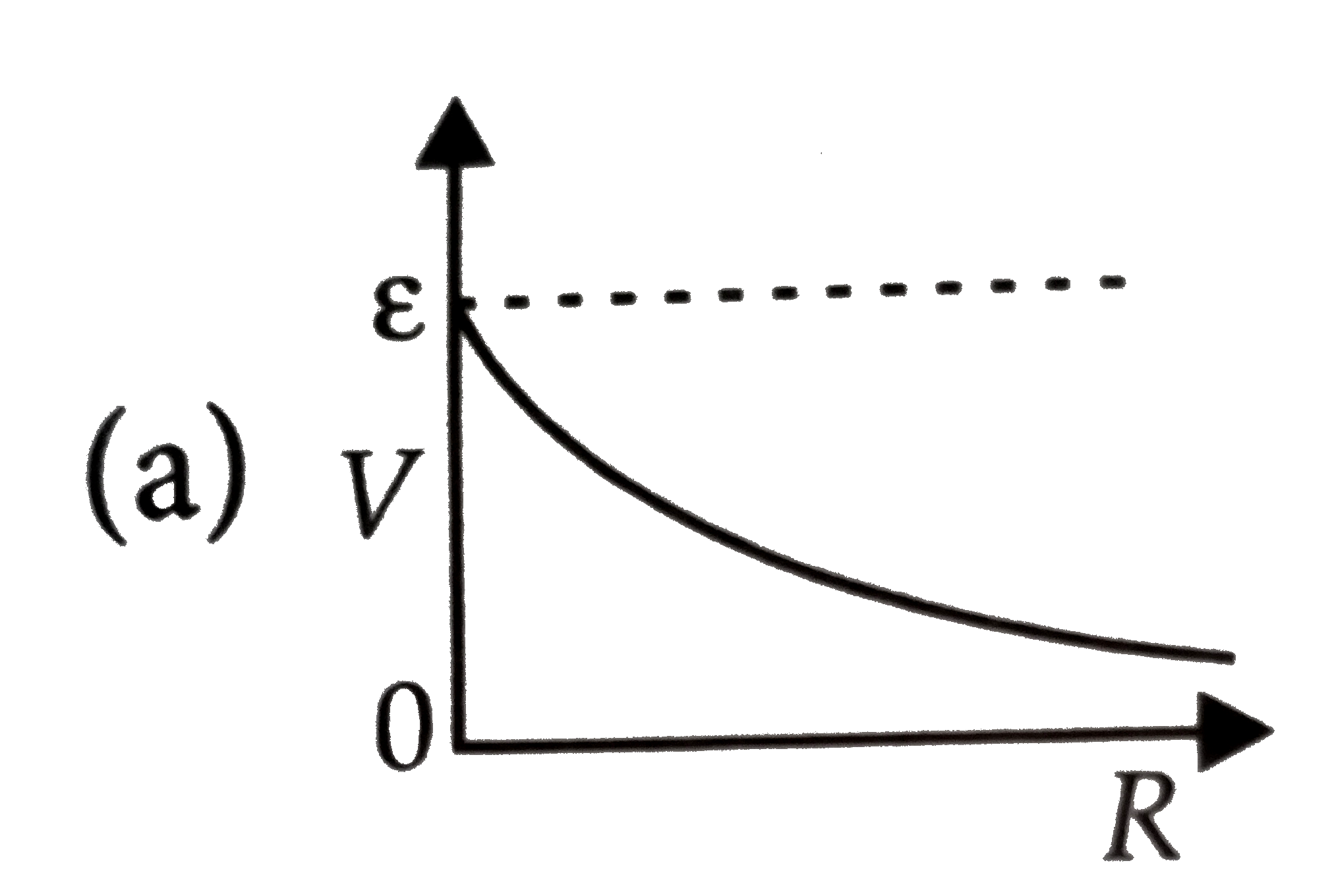 B
B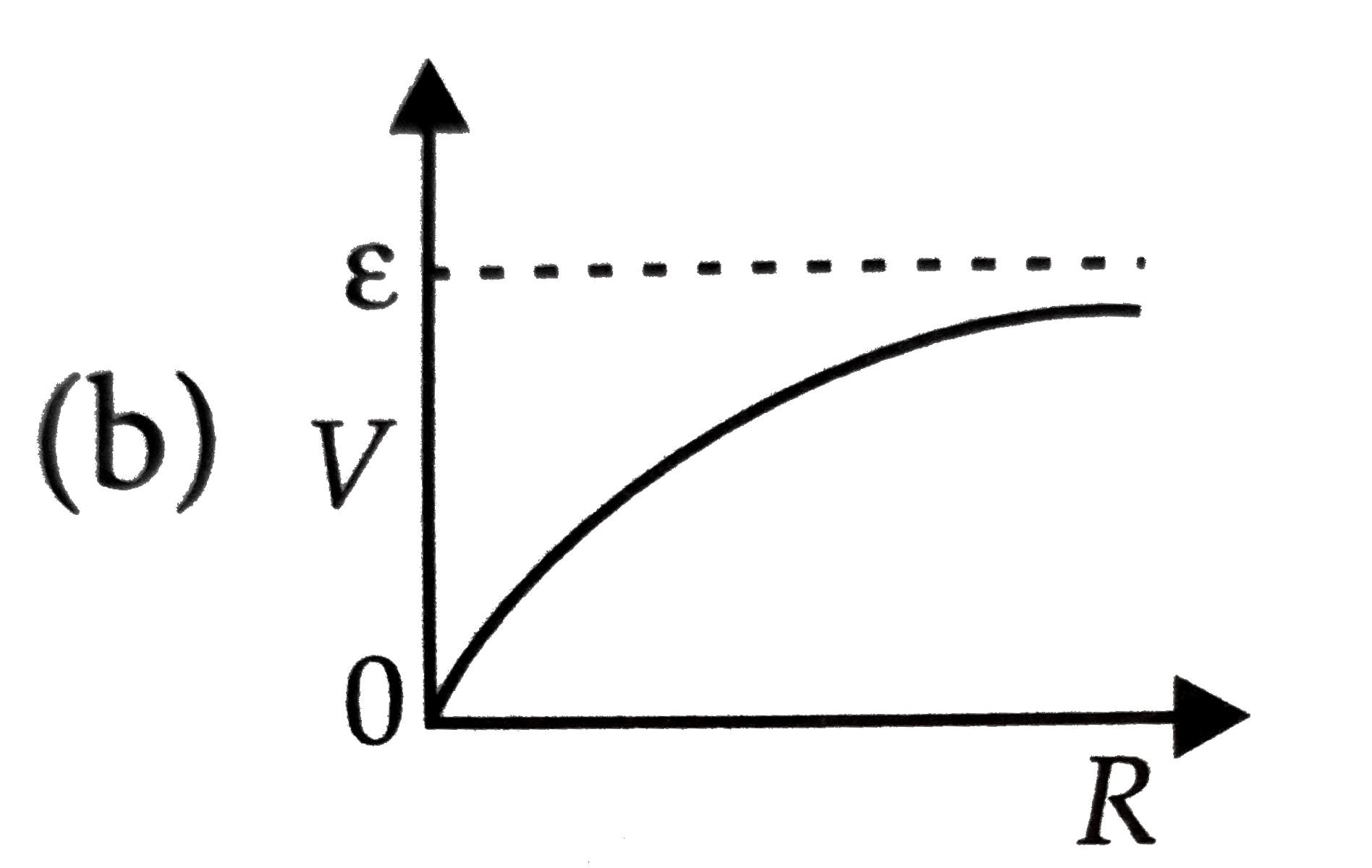 C
C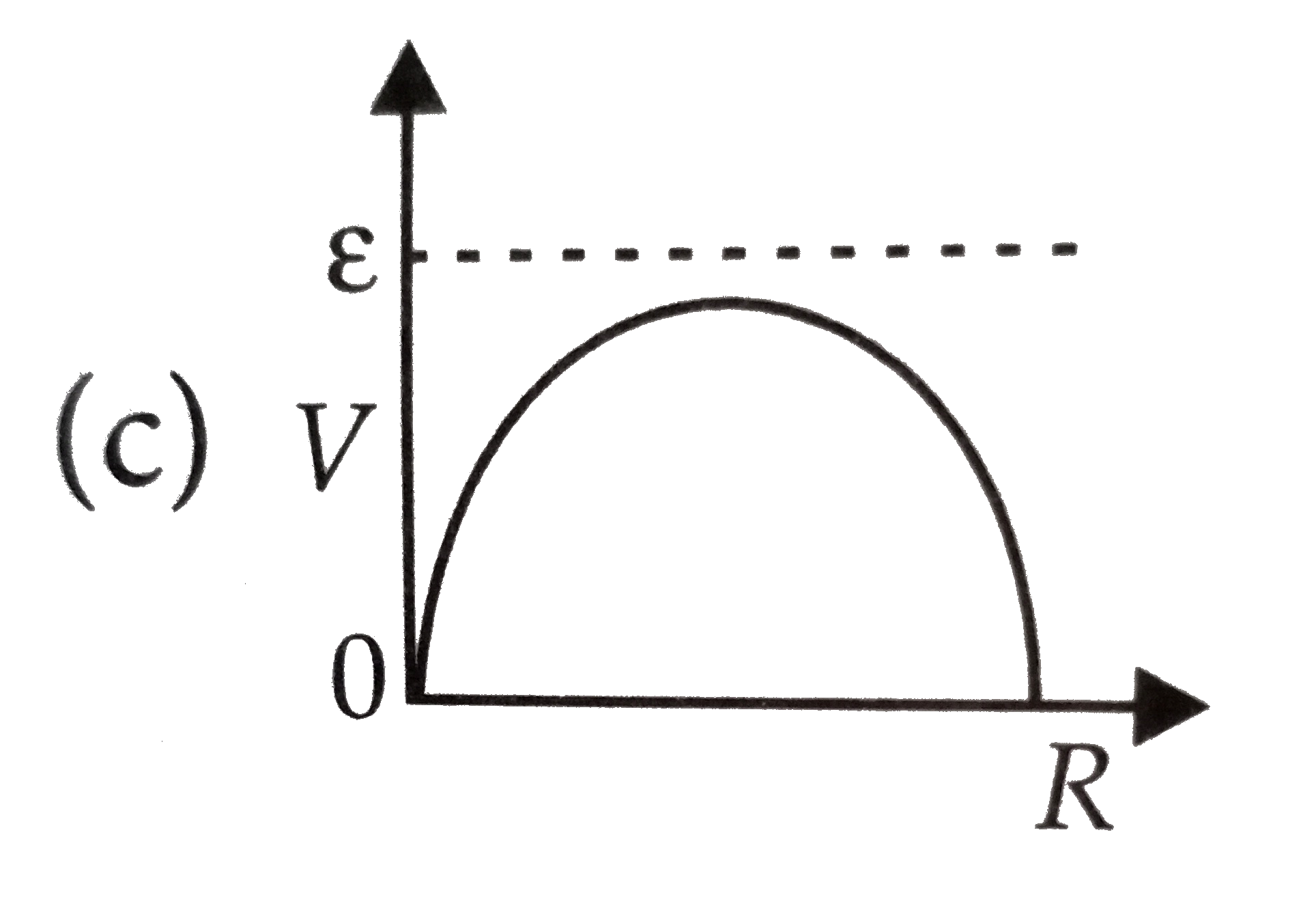 D
D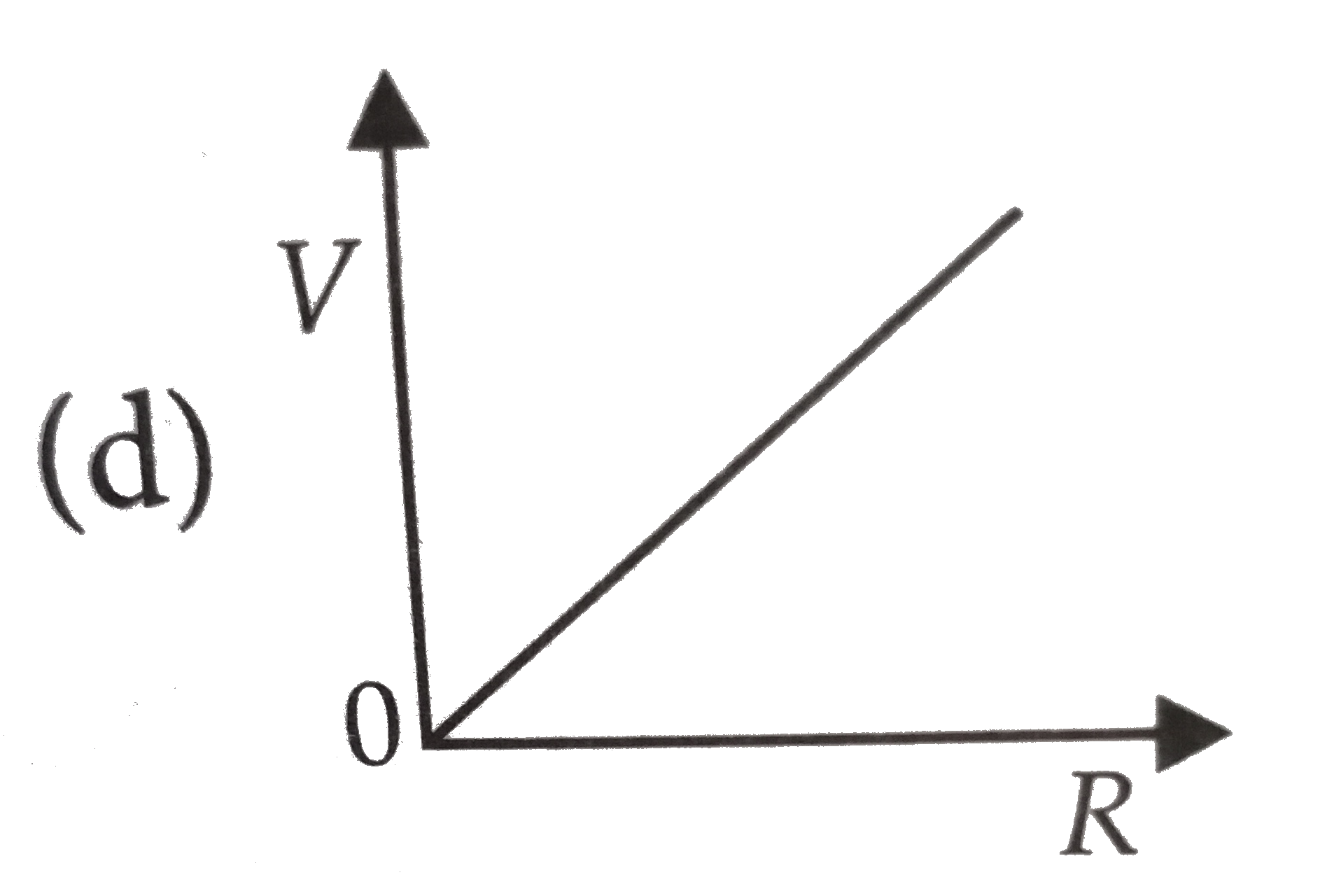
A cell having an emf E and internal resistance r is connected across a variable external resistance R. As the resistance R is increased, the plot of potential difference V across R is given by
View SolutionA cell of e.m.f E and internal resitance r ,is connected to an external resistance R. the variation of potential difference V across the resistance R as function of R as shown in the figure, is the best represented by curve
_PHY_E01_011_Q01.png)
View SolutionA cell of e.m. E and internal resistance r is connected across a resistancer. The potential difference between the terminals of the cell must be
View Solution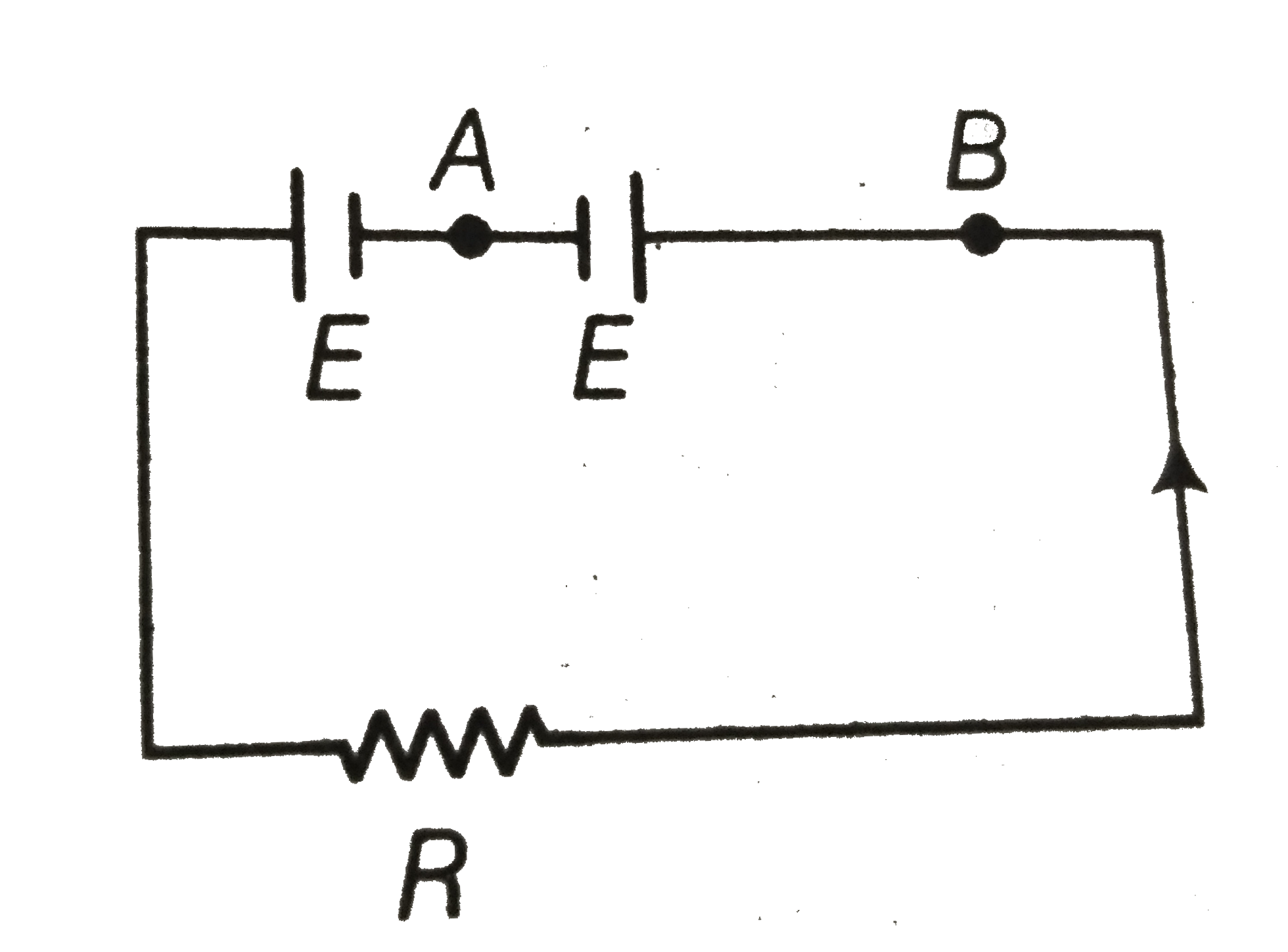
Two cells of same emf E but internal resistance r1andr2 are connected in series to an external resistor R(figure). What should be the value of R so that the potential difference across the terminals of the first cell becomes zero?
View SolutionA cell of emf E and internal resistance r is connected across an external resistance R. Plot a graph showing the variation o P.D. Across R, verses 'R.
View SolutionThere are n cells, each of emf E and internal resistance r, connected in series with an external resistance R. One of the cells is wrongly connected, so that it sends current in the opposite direction. The current flowing in the circuit is
View Solution
